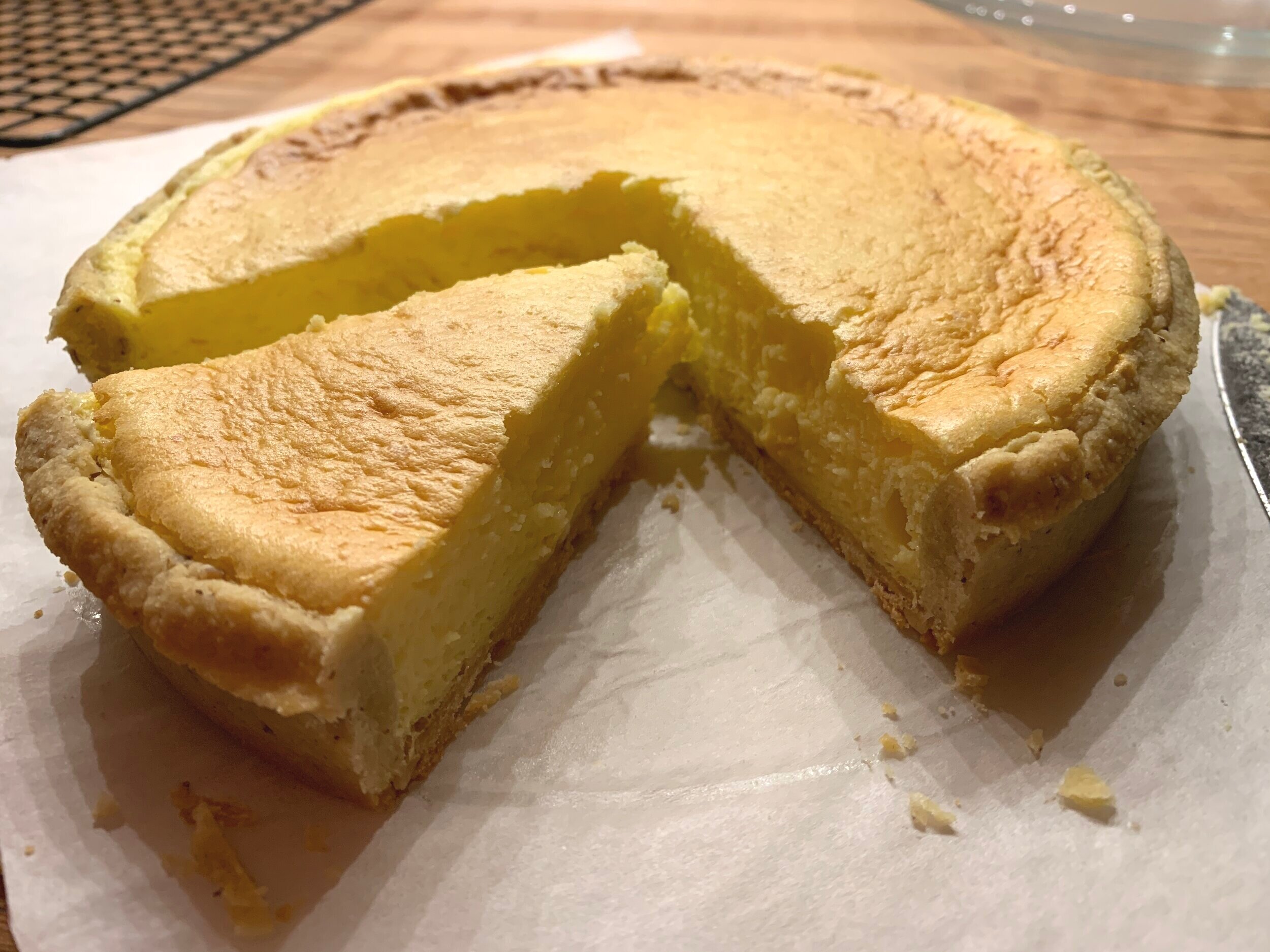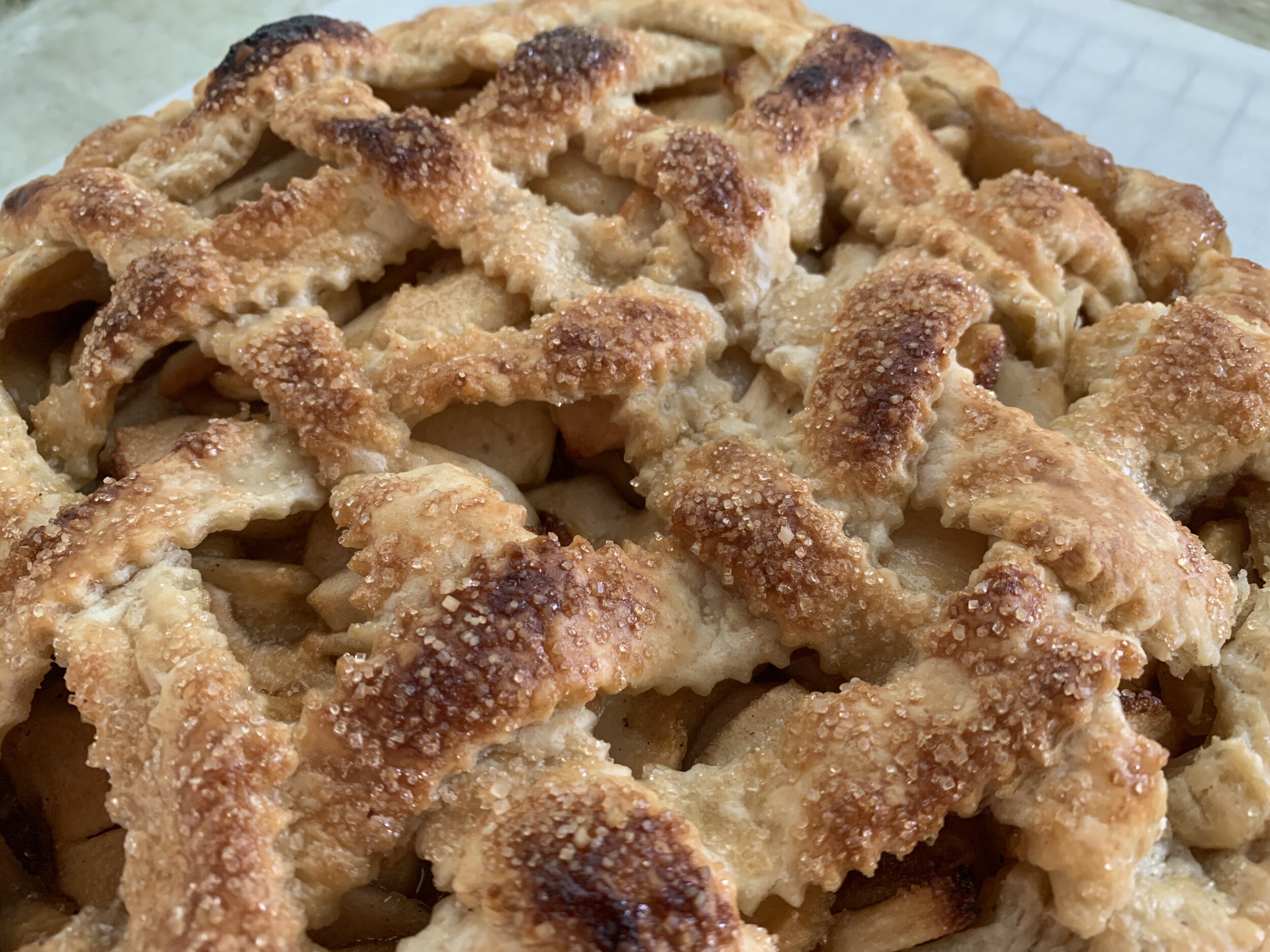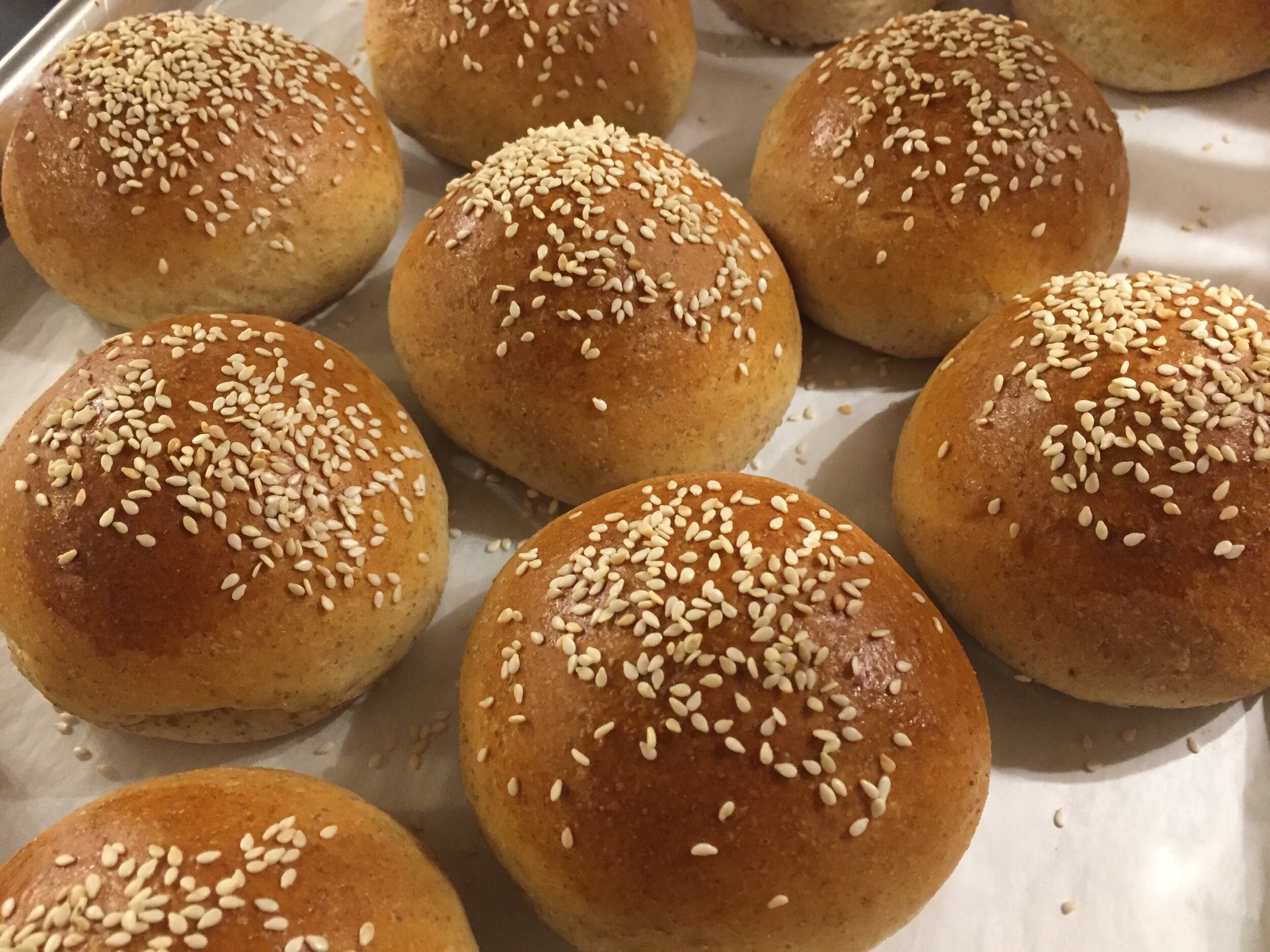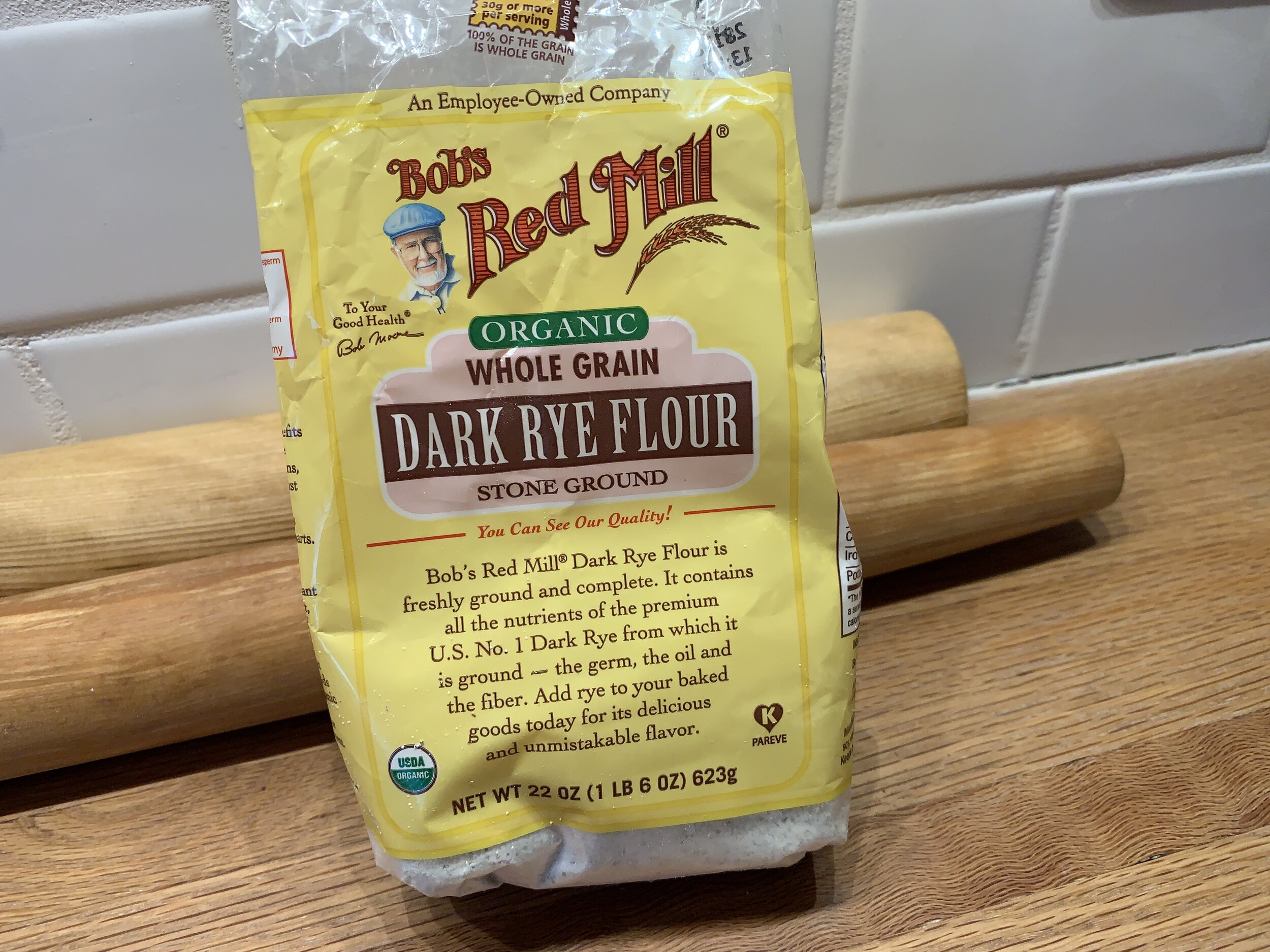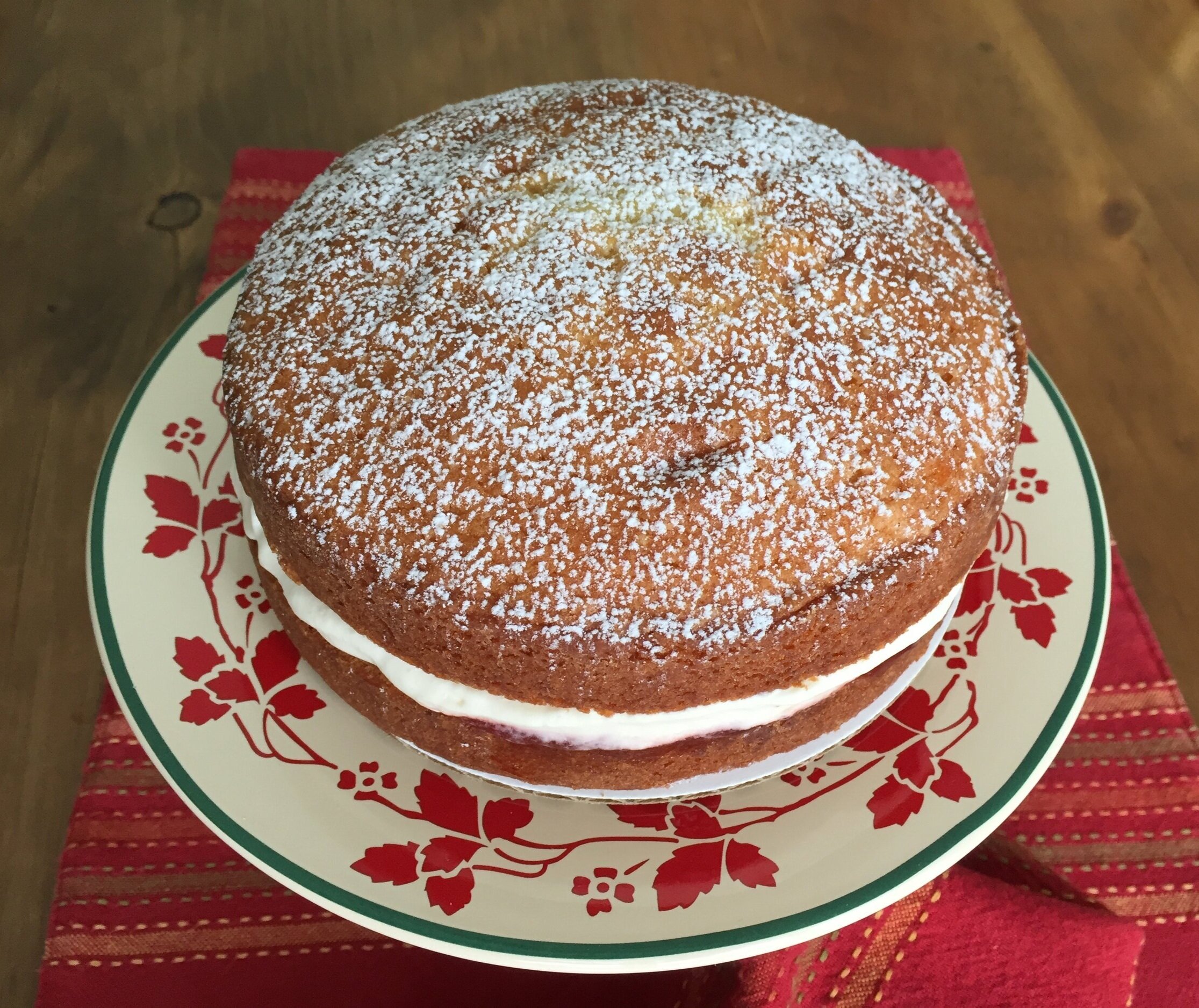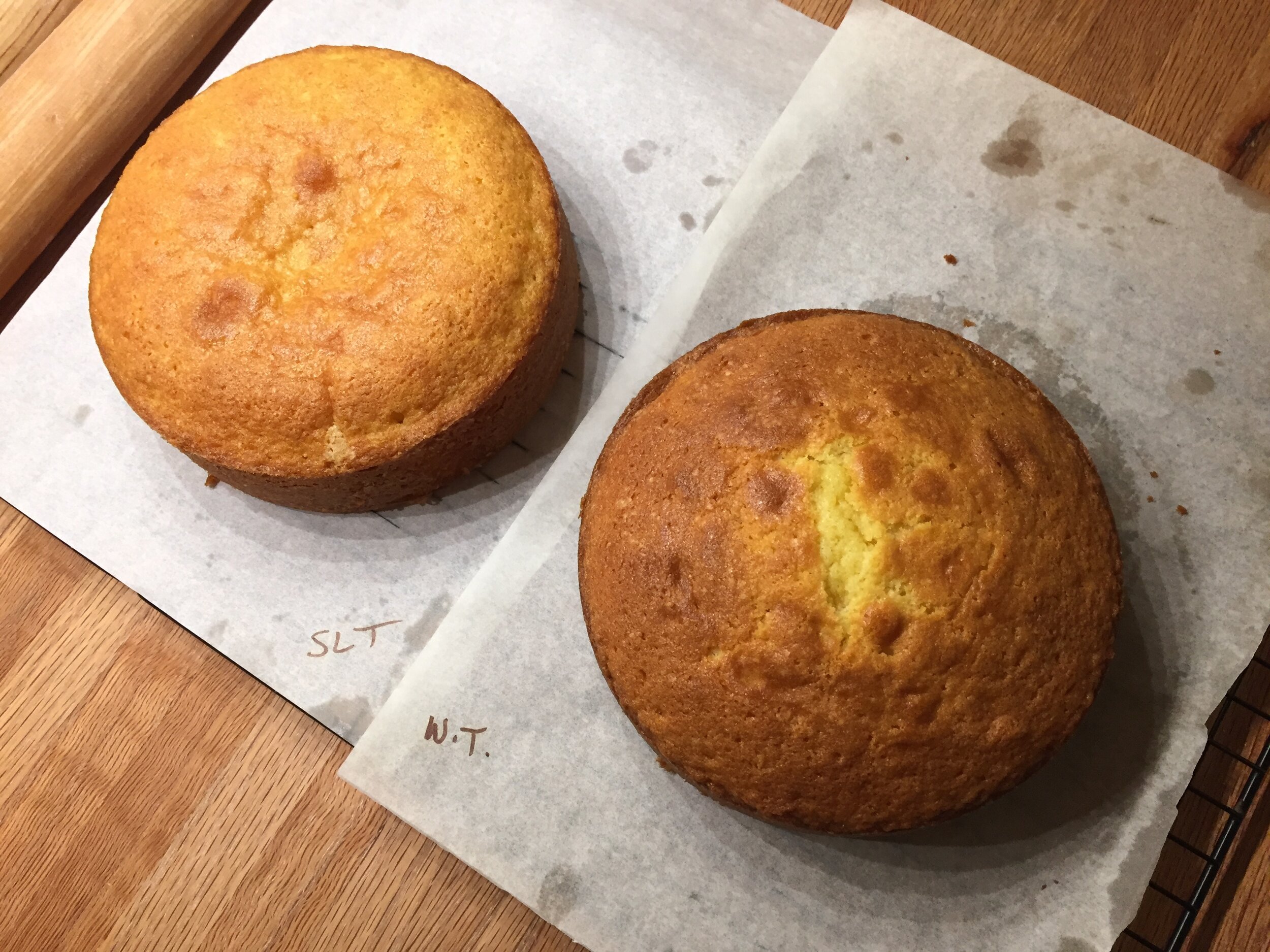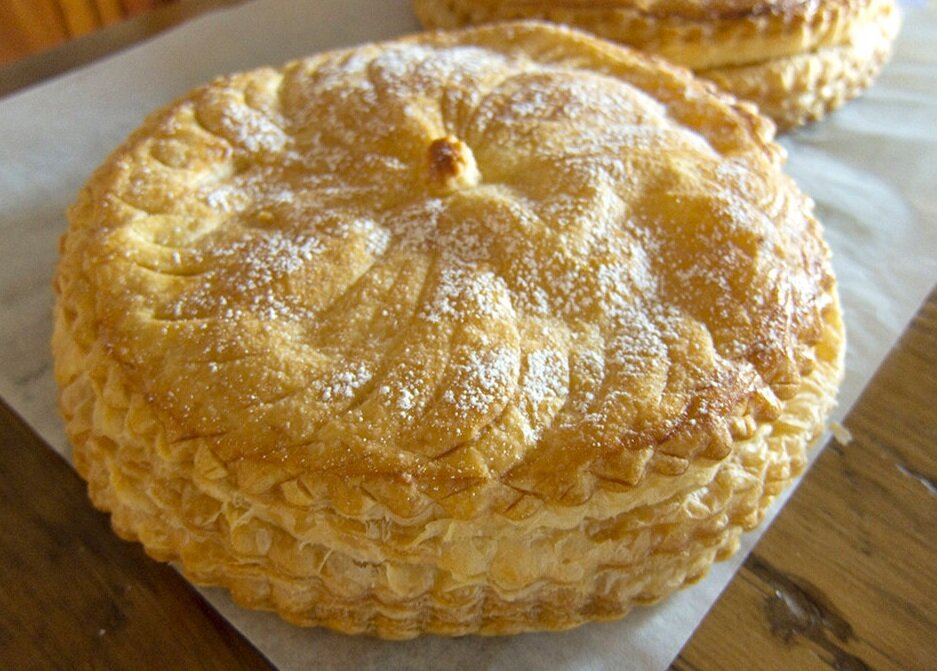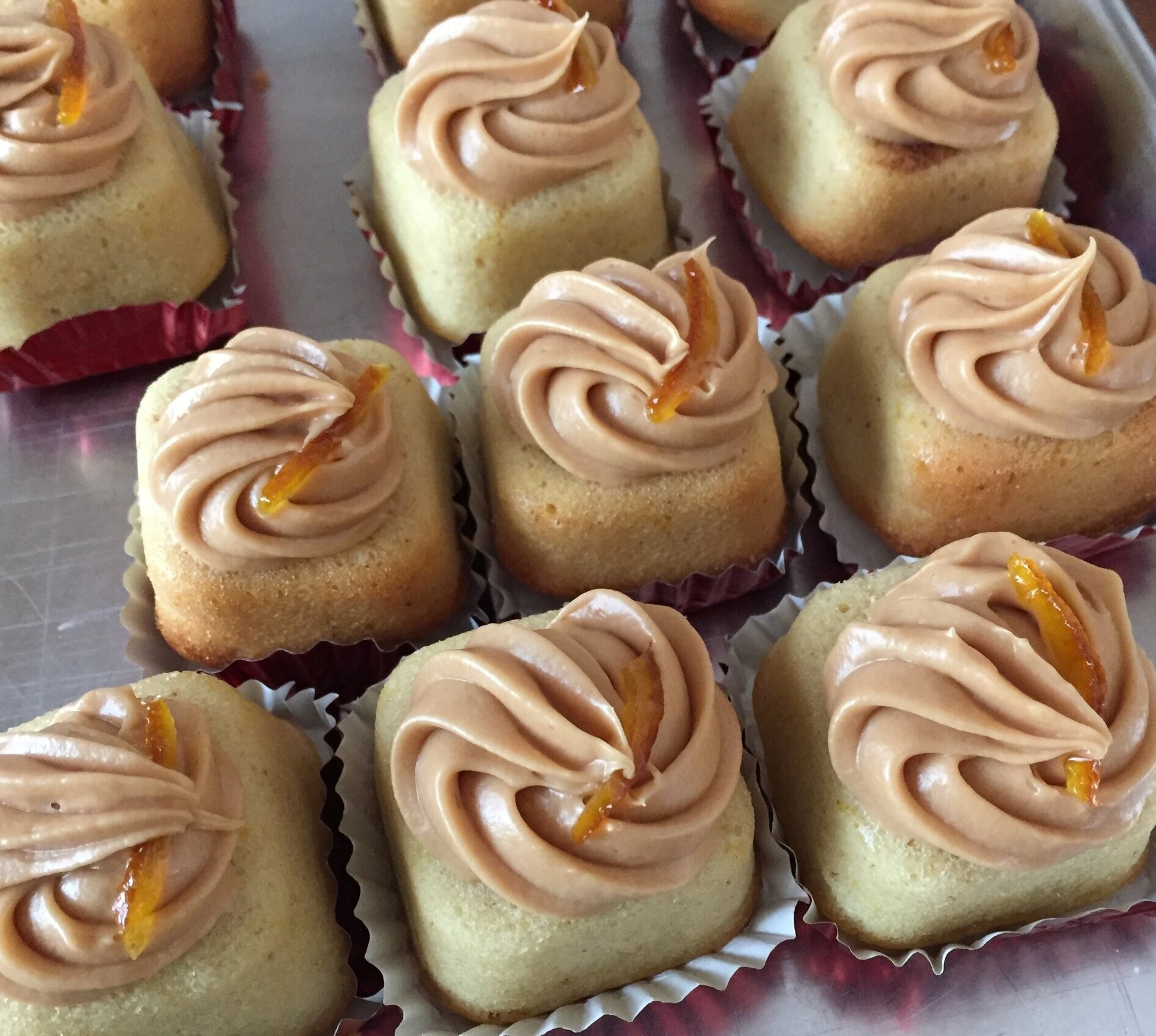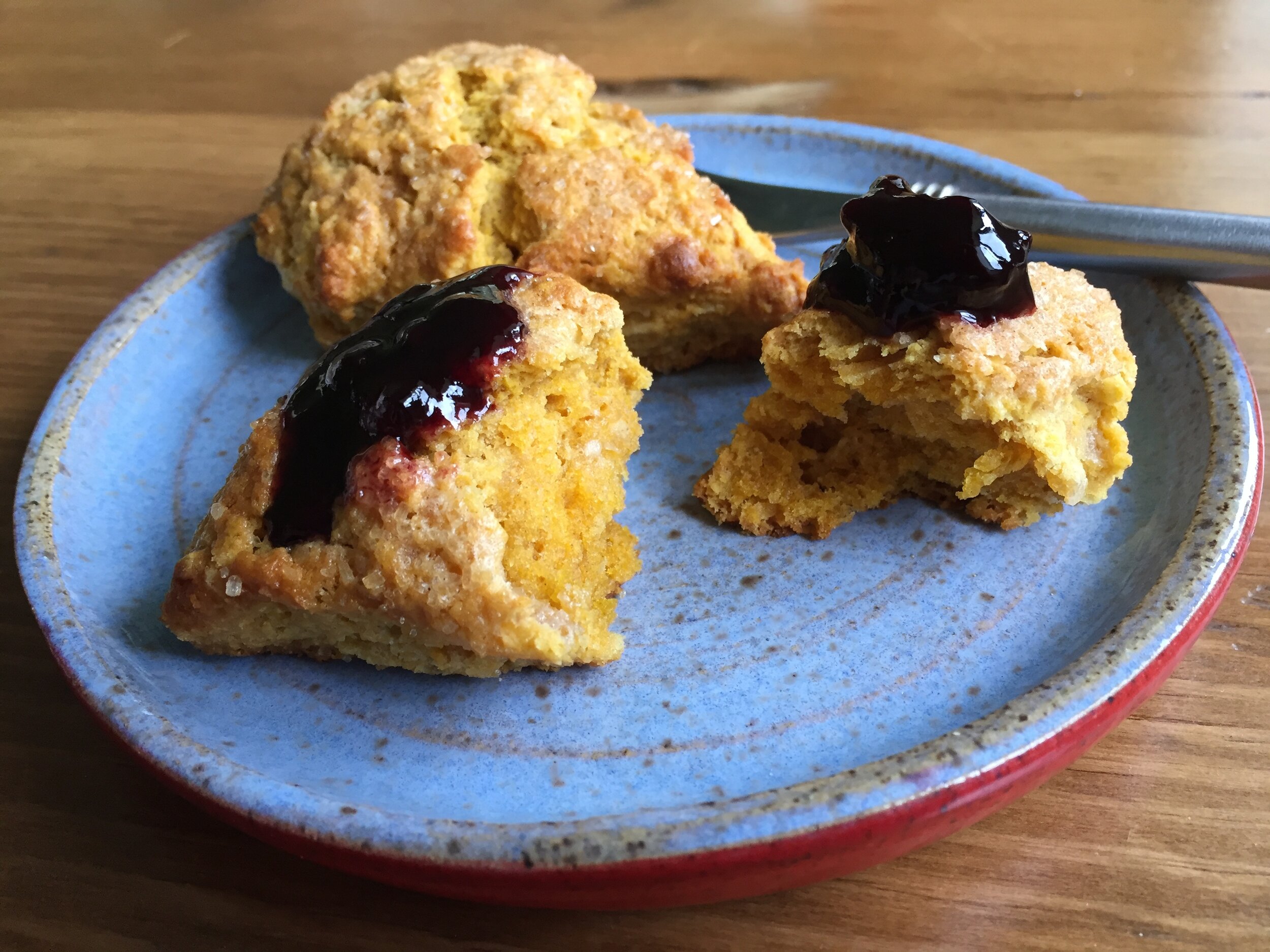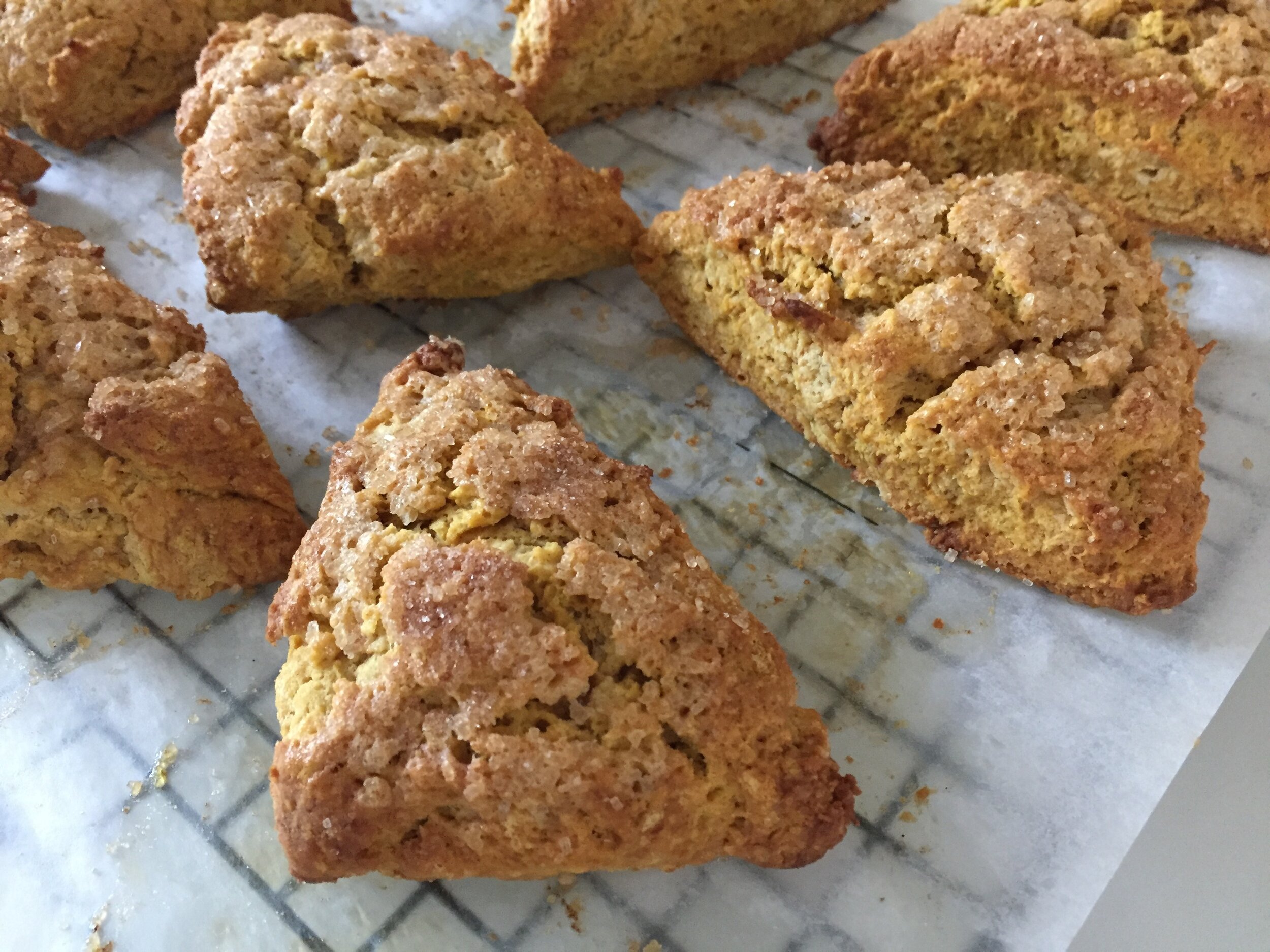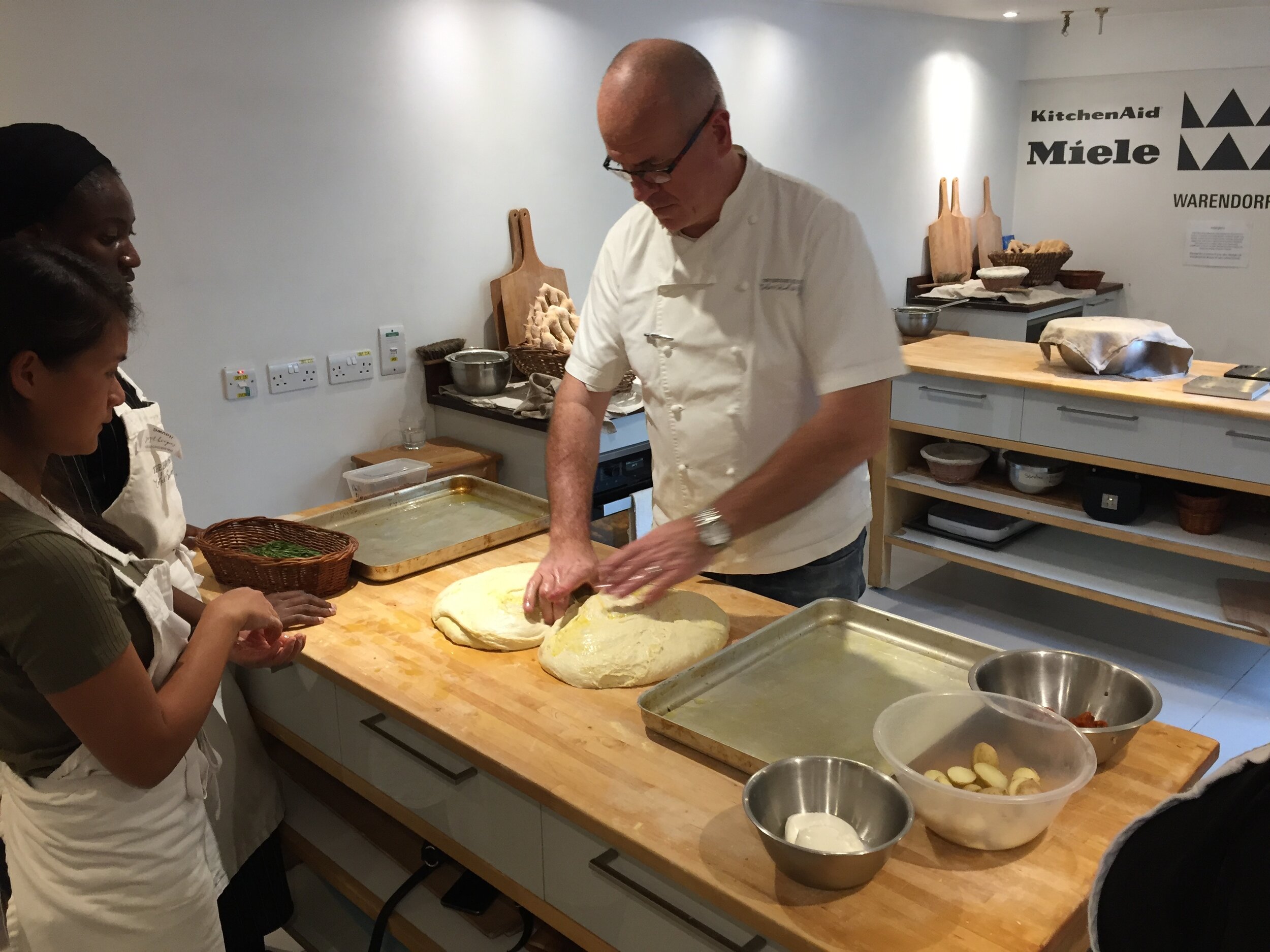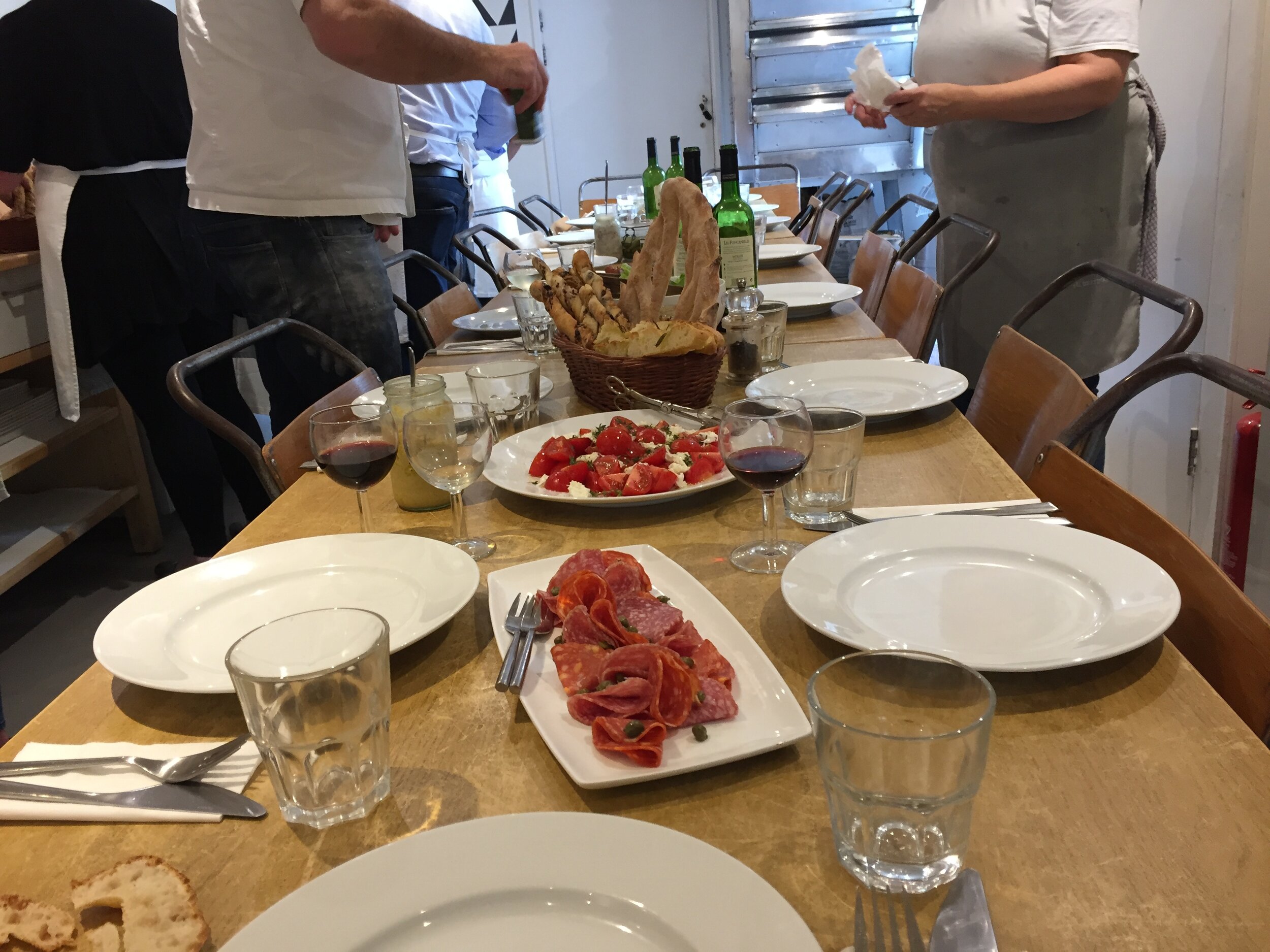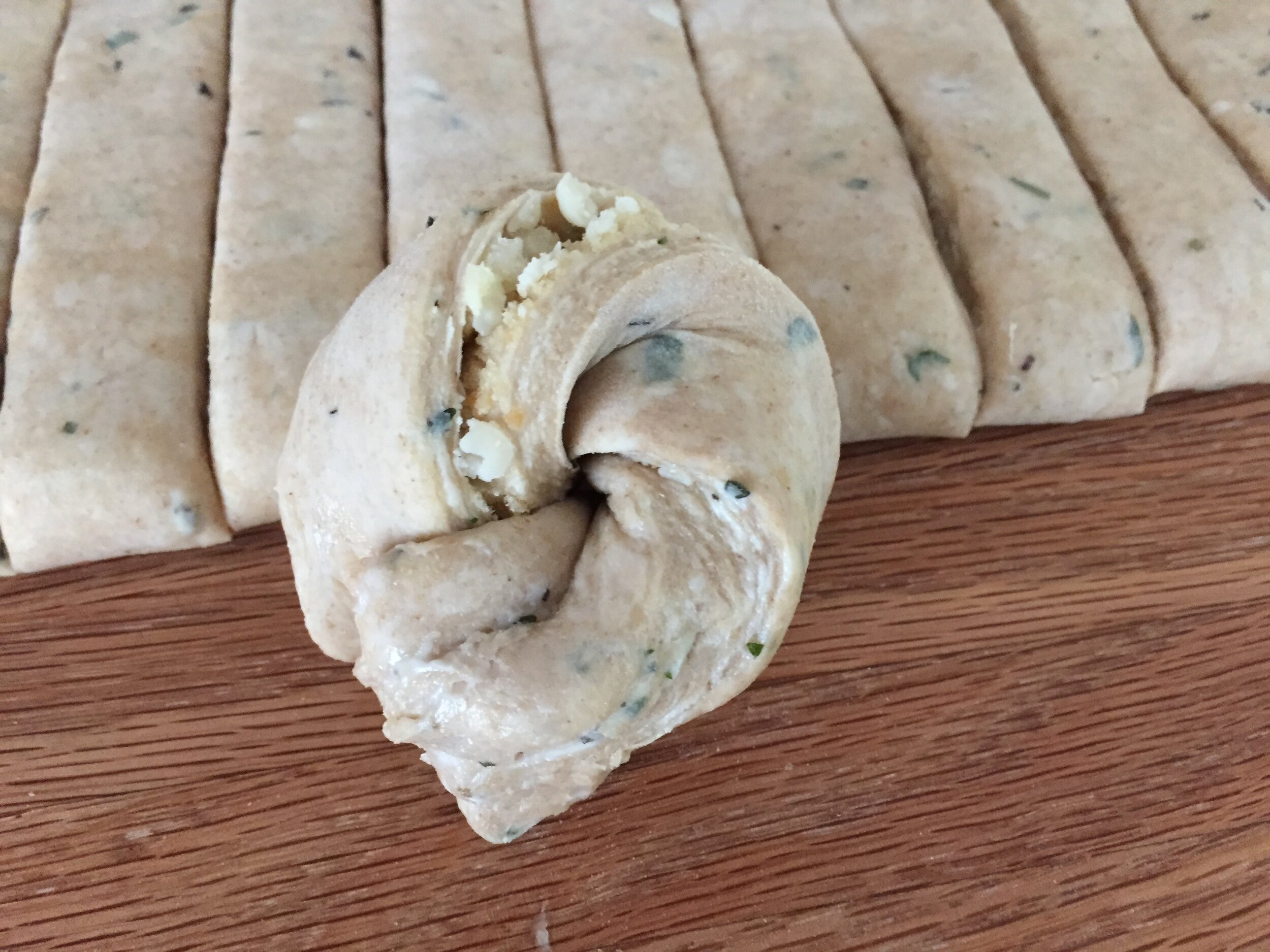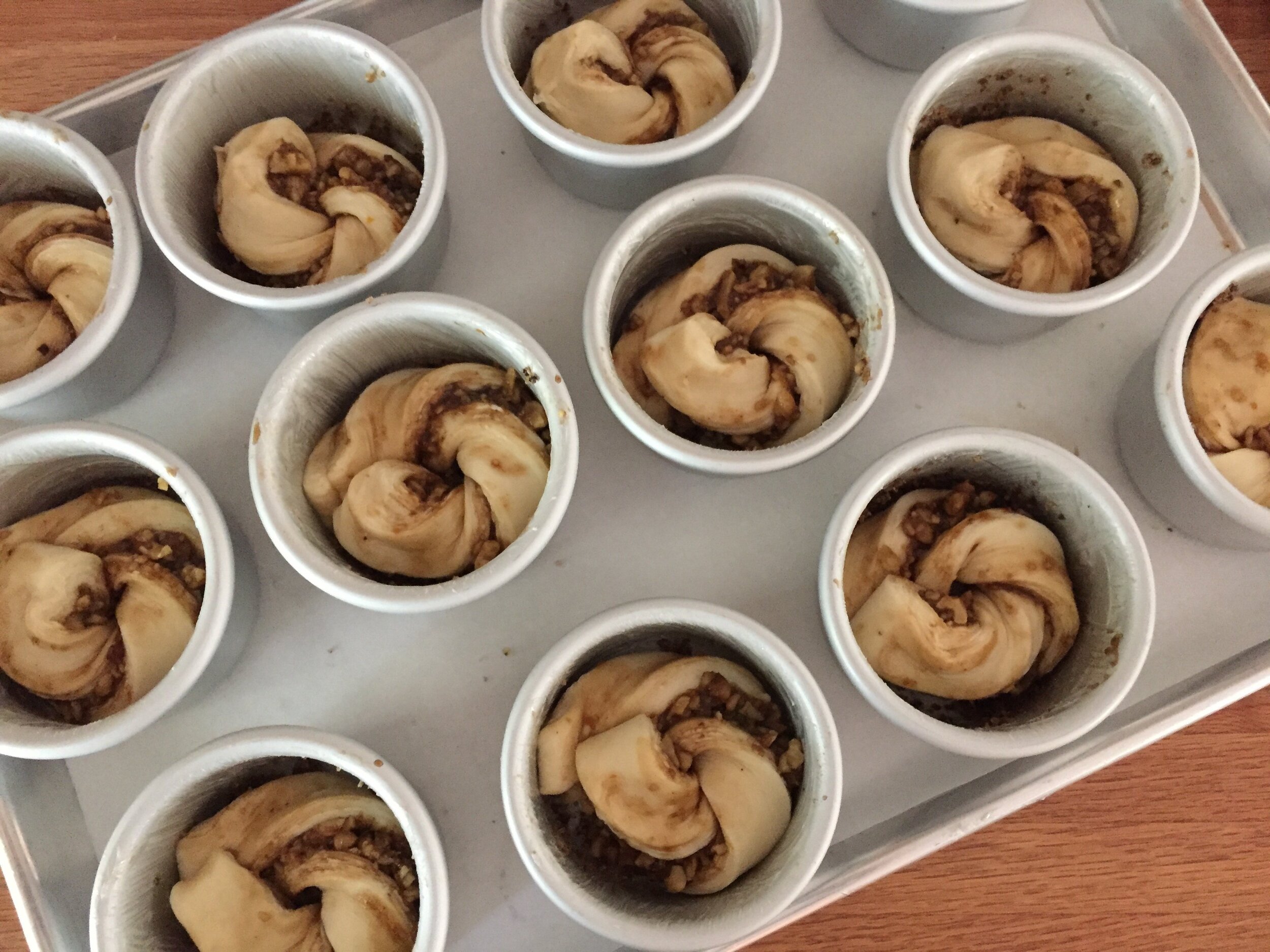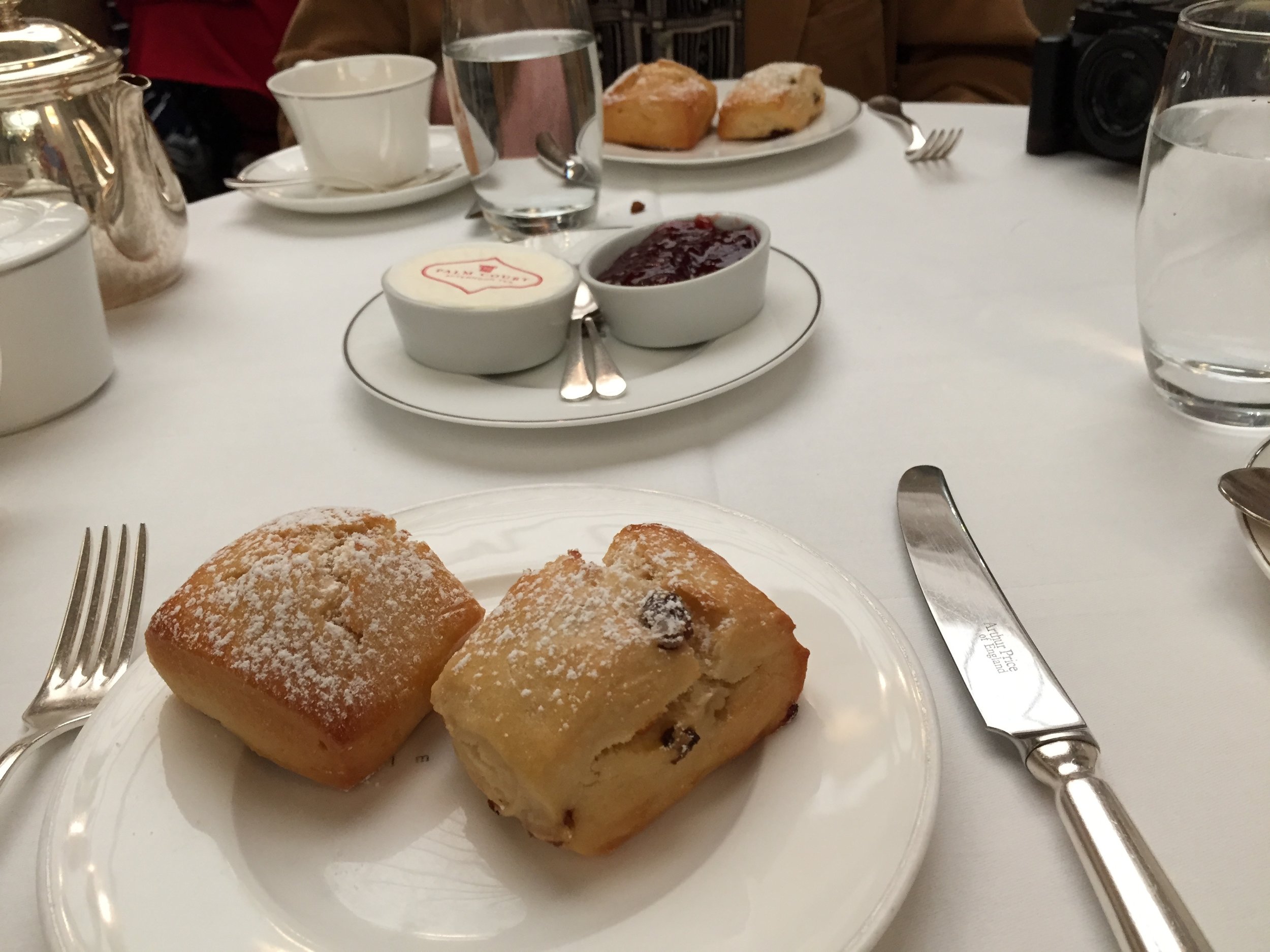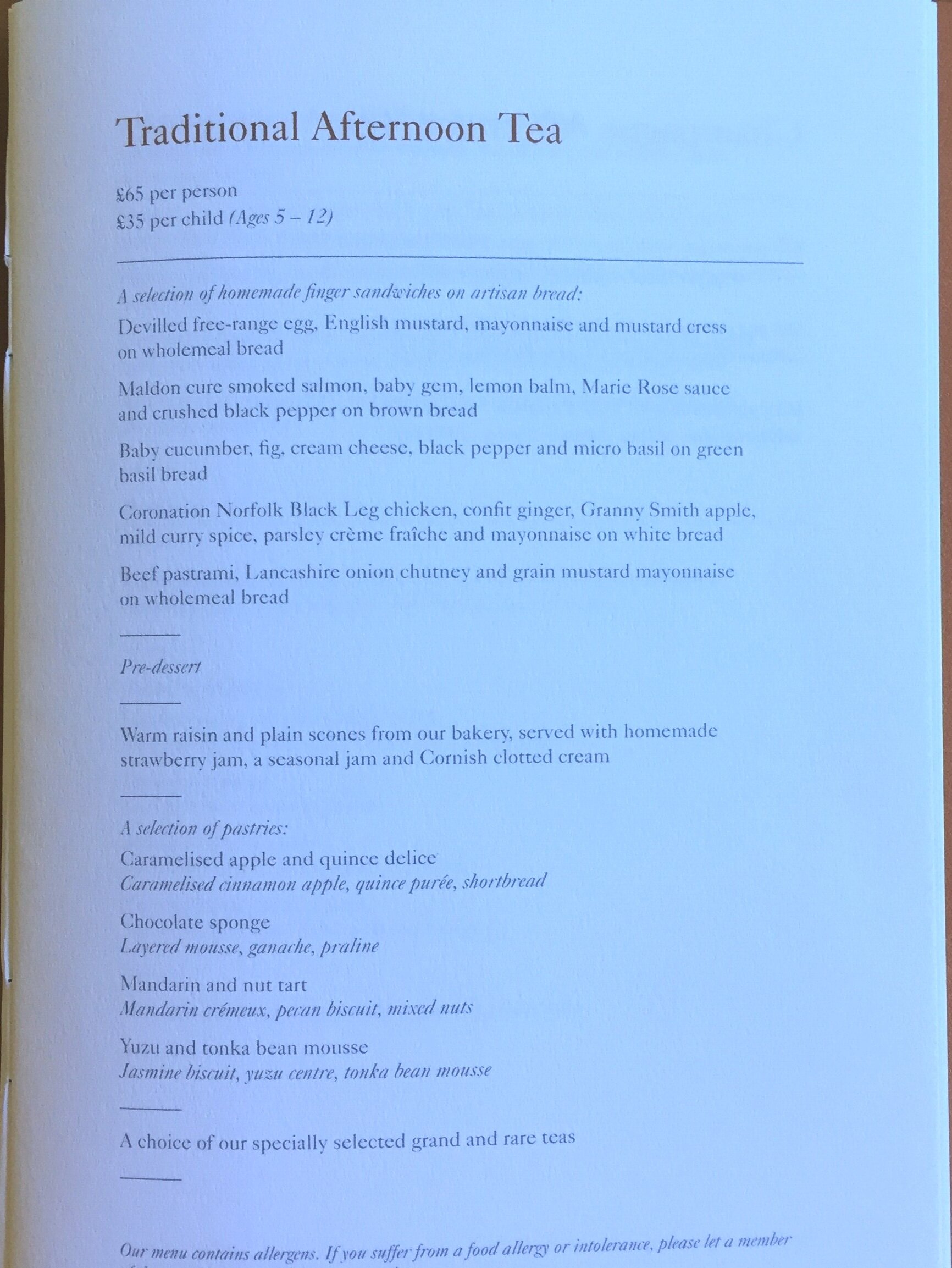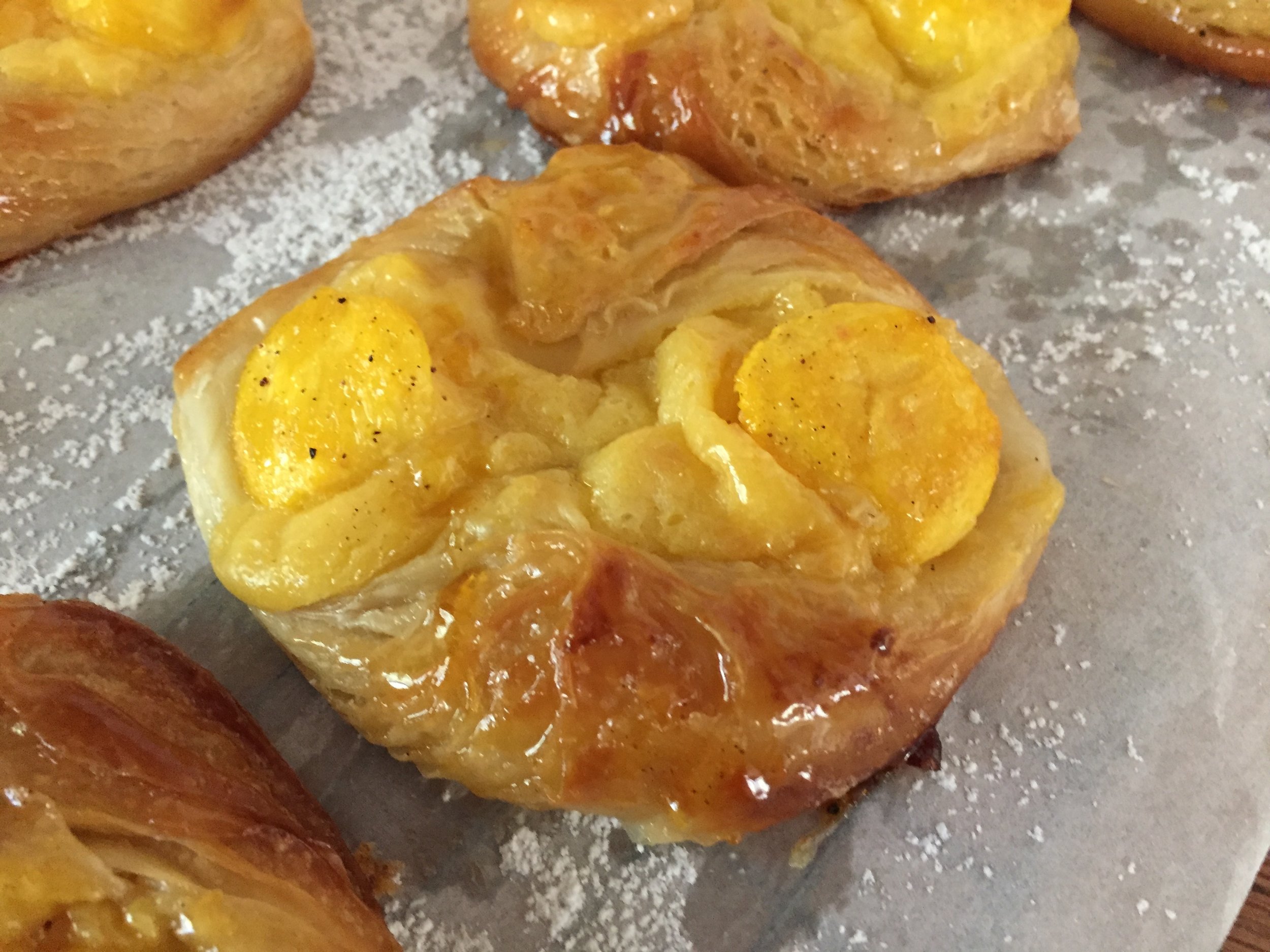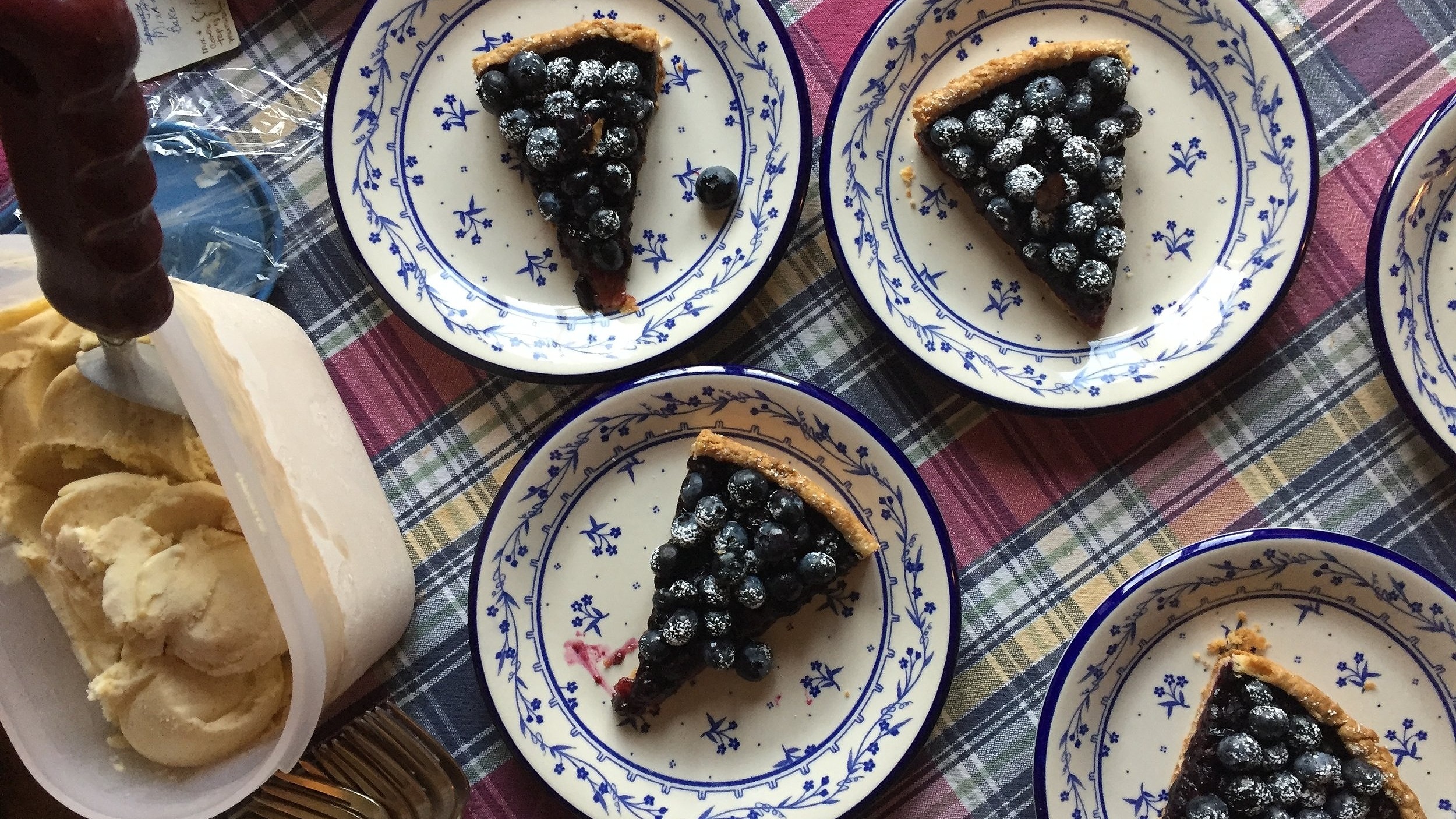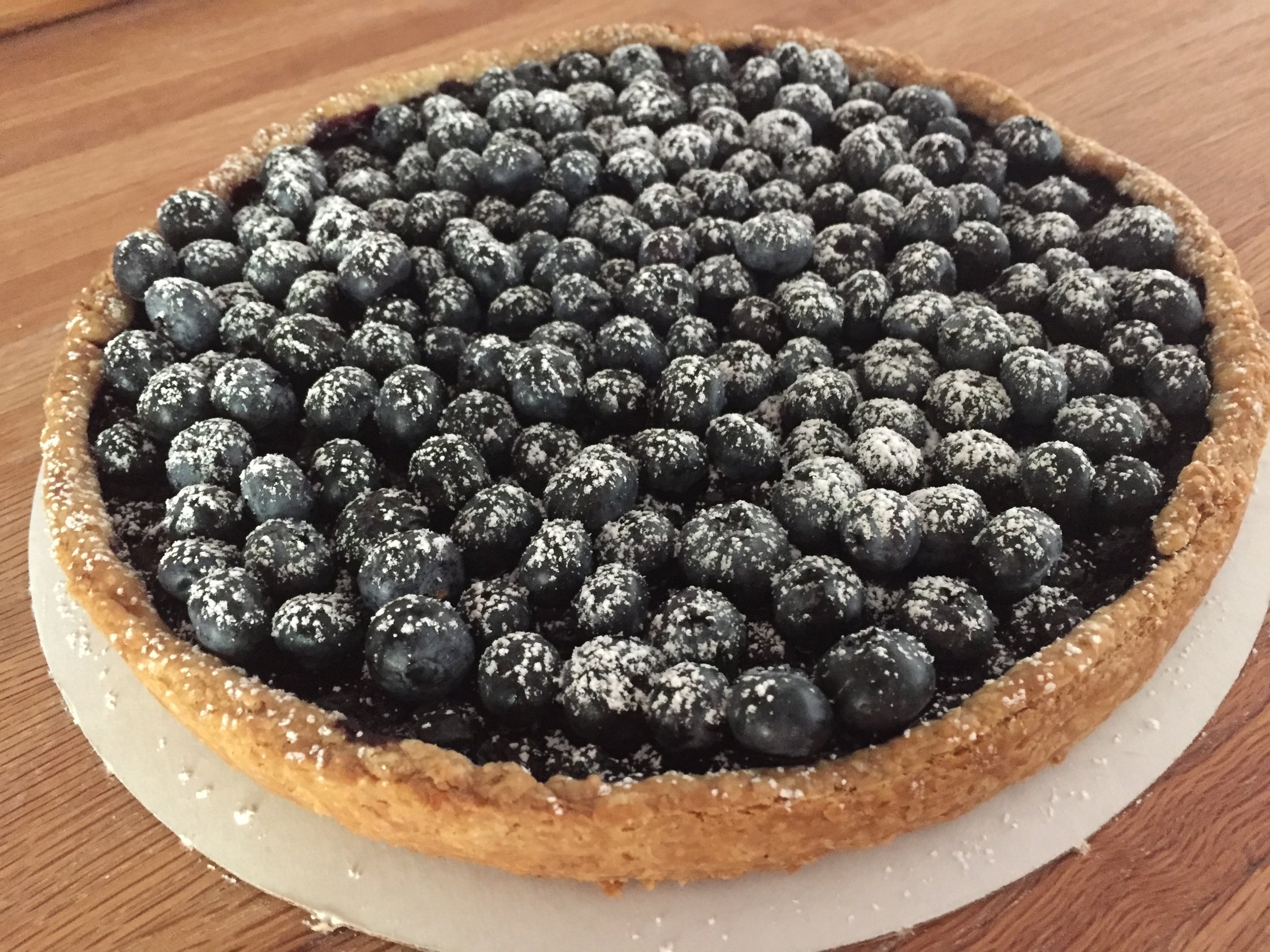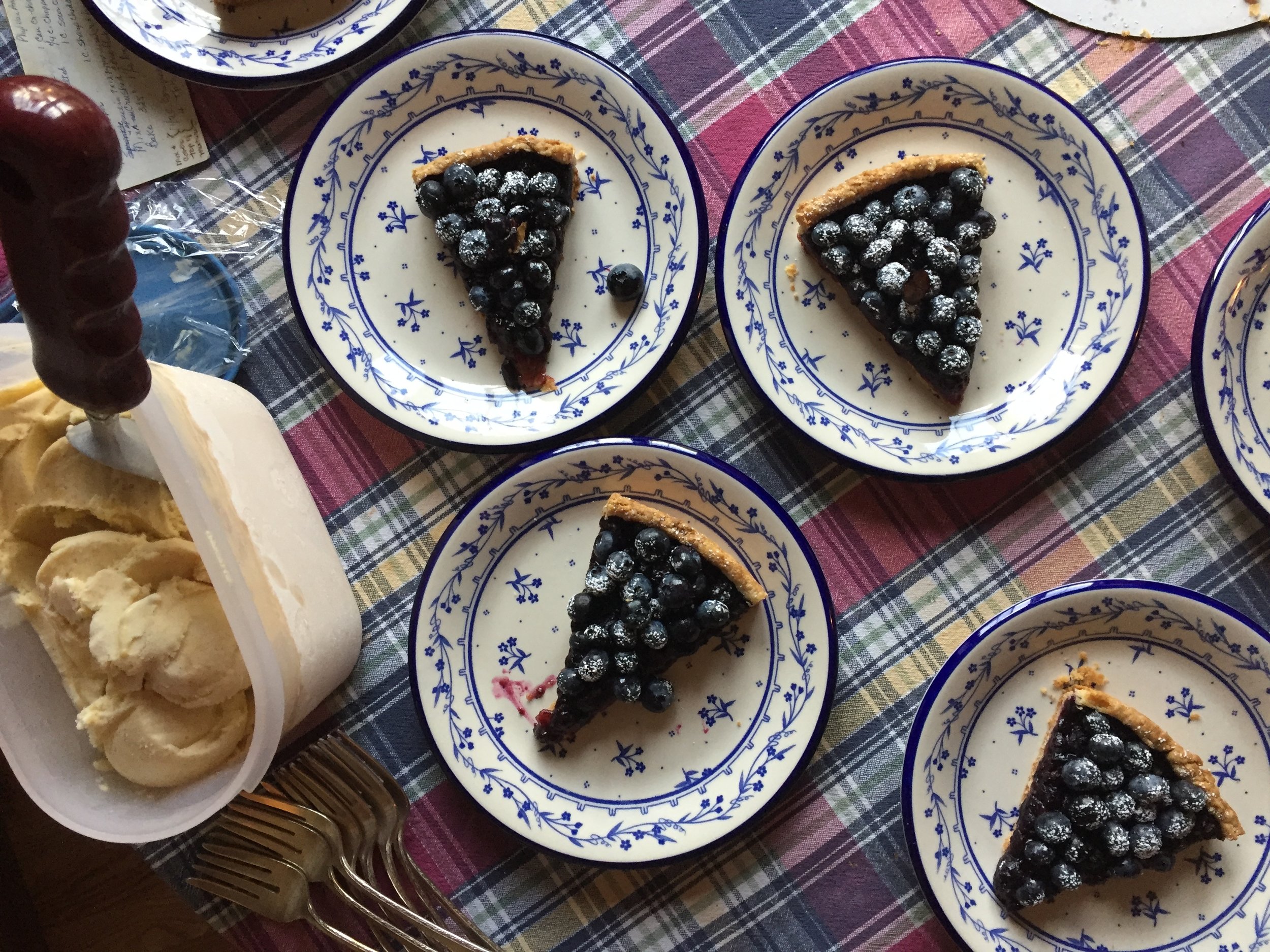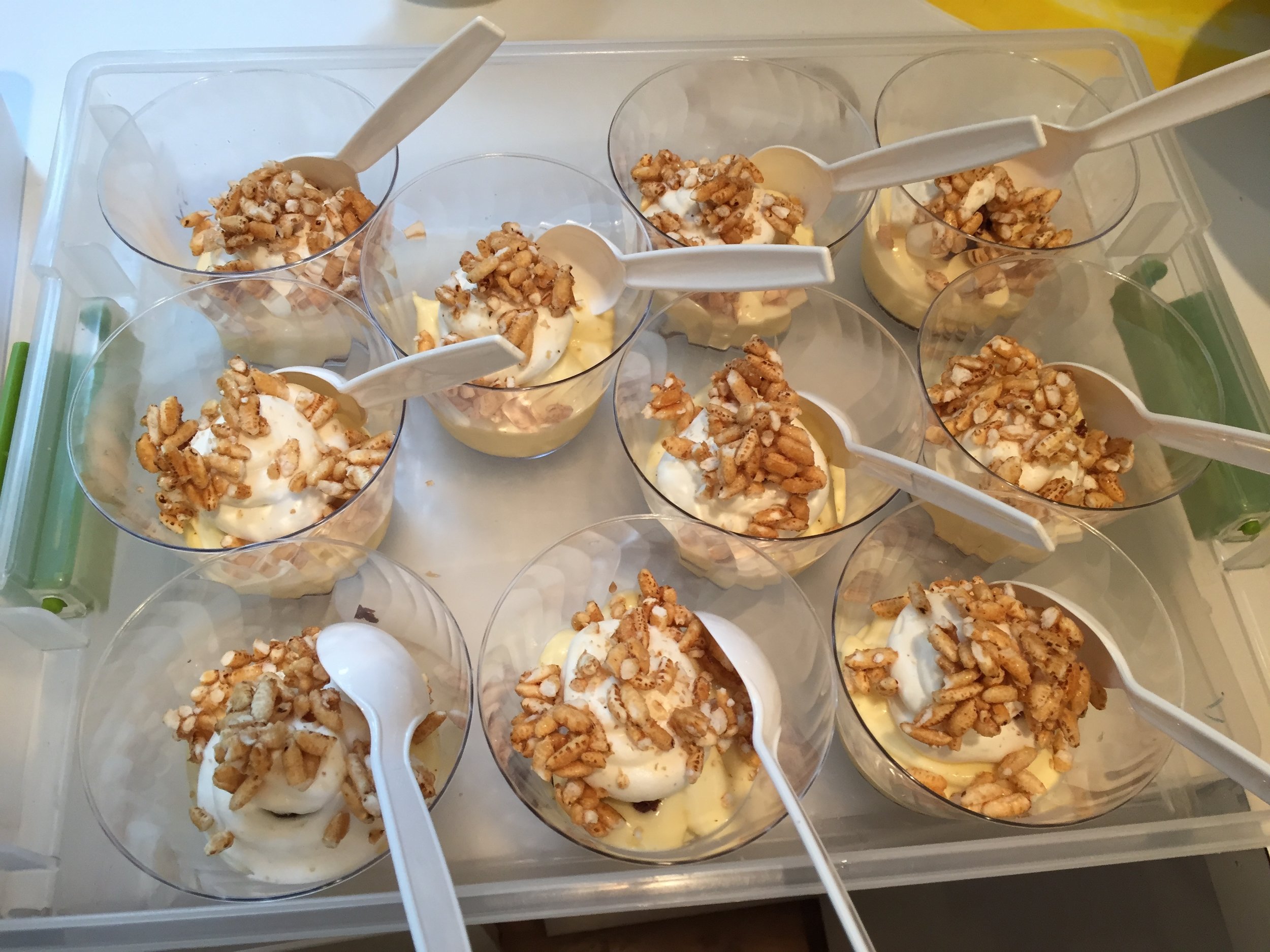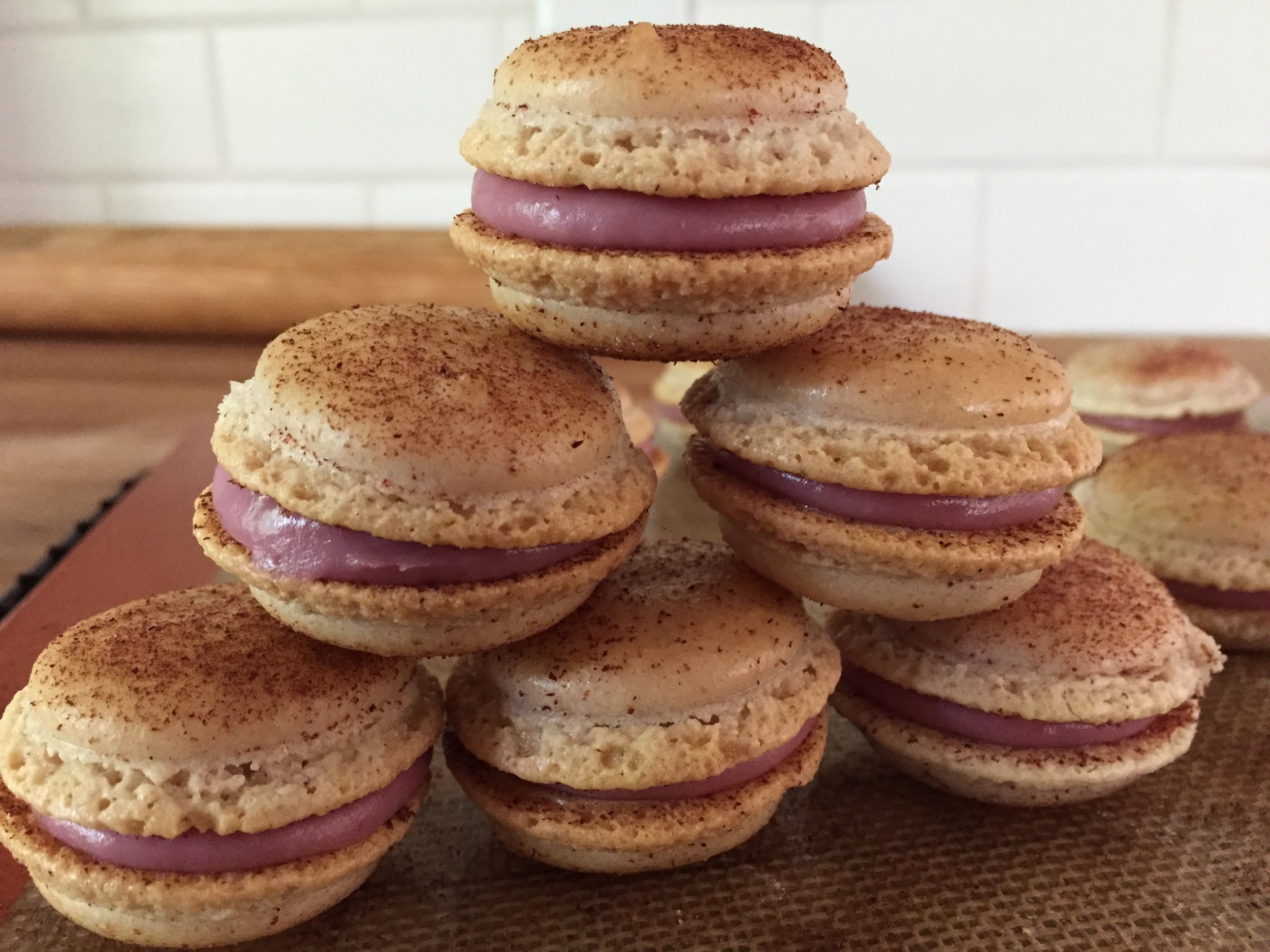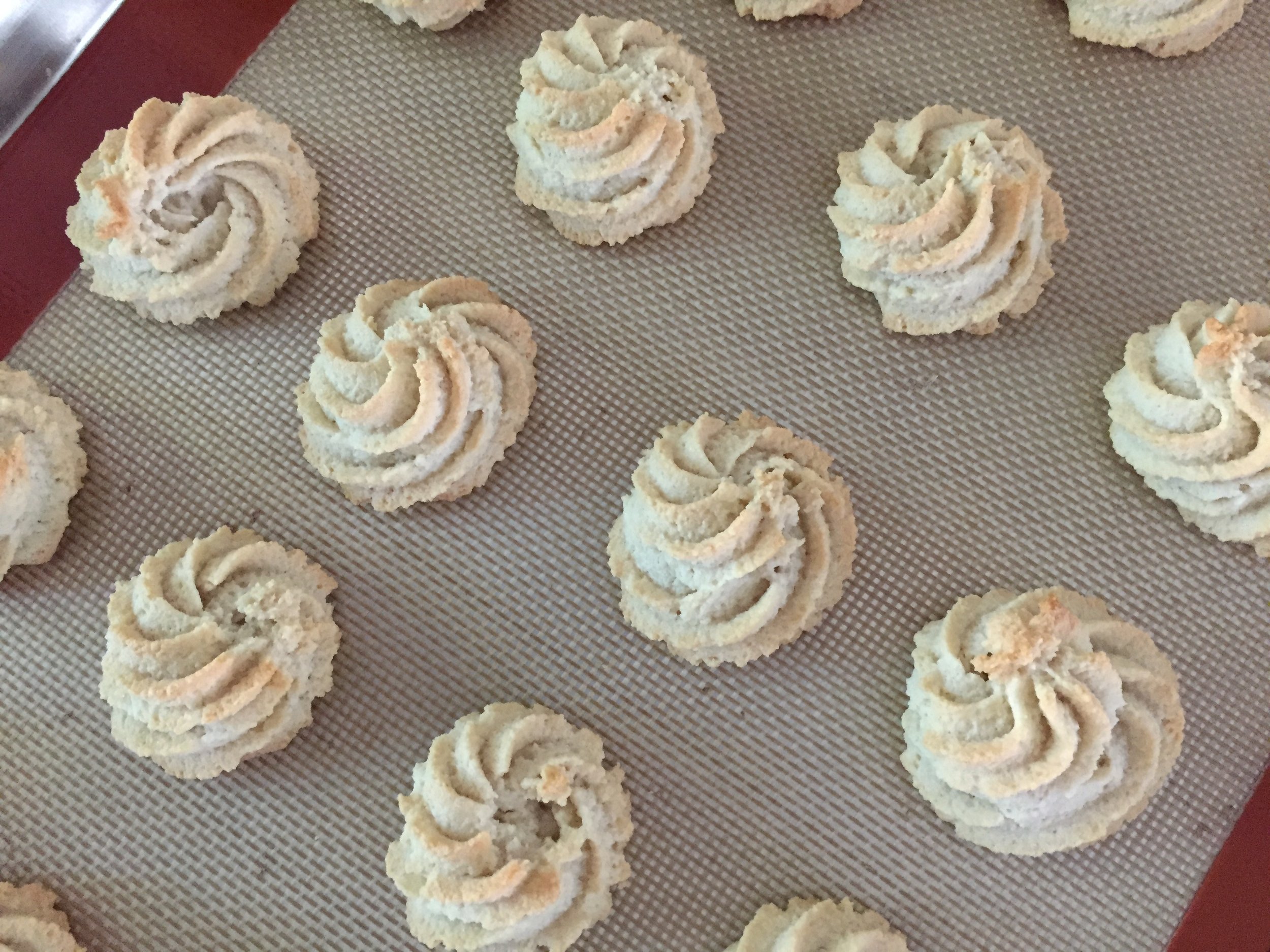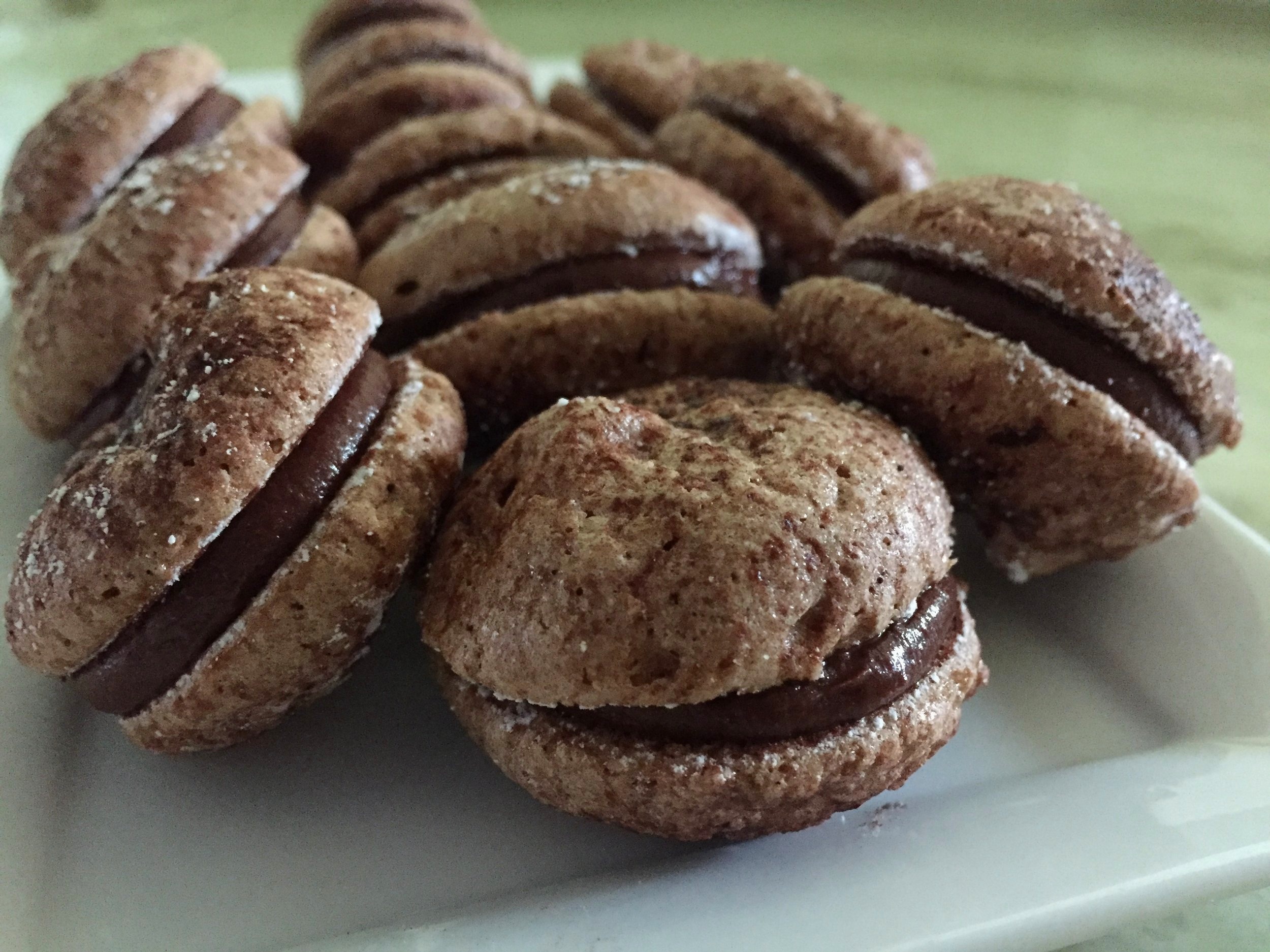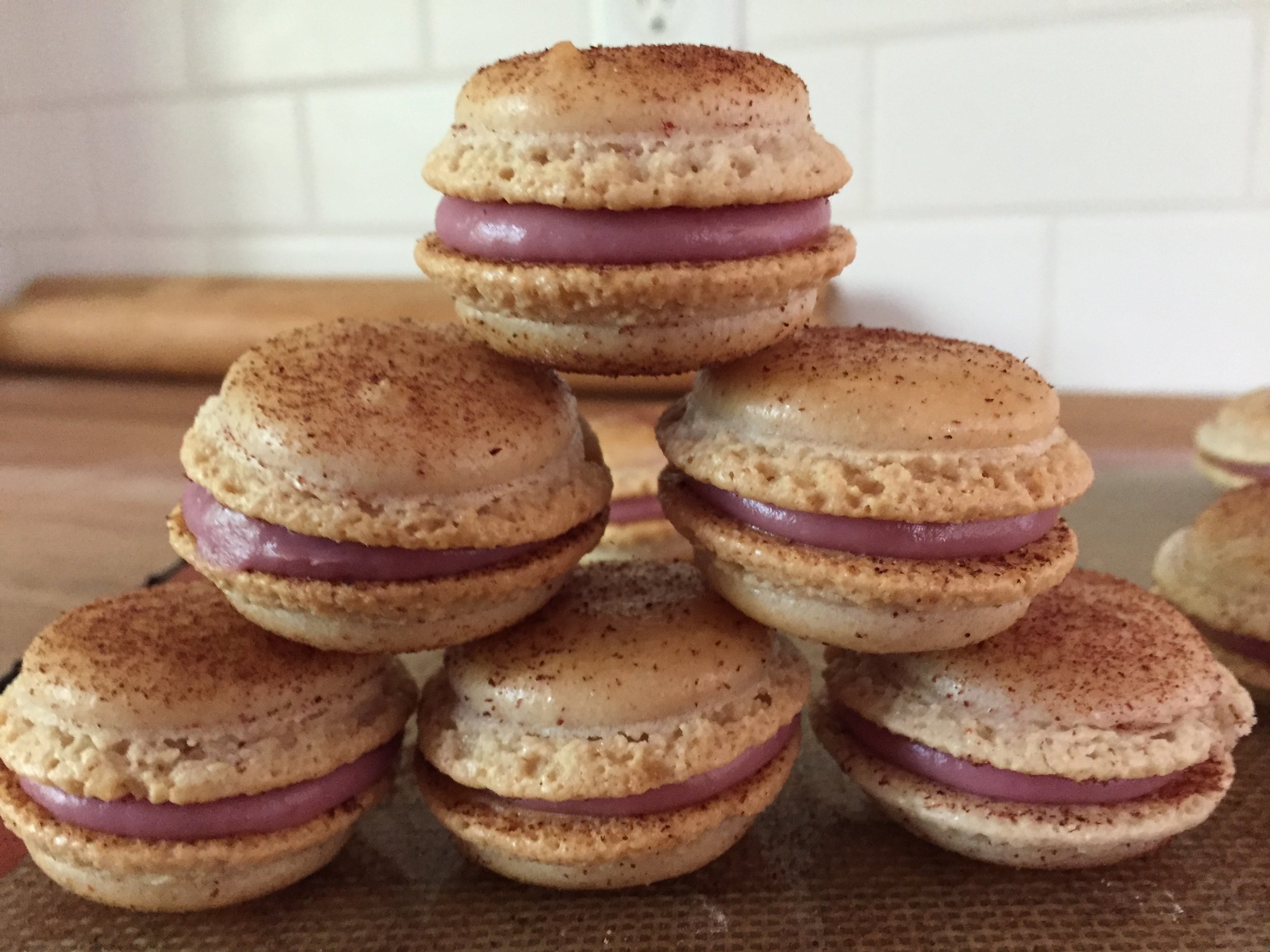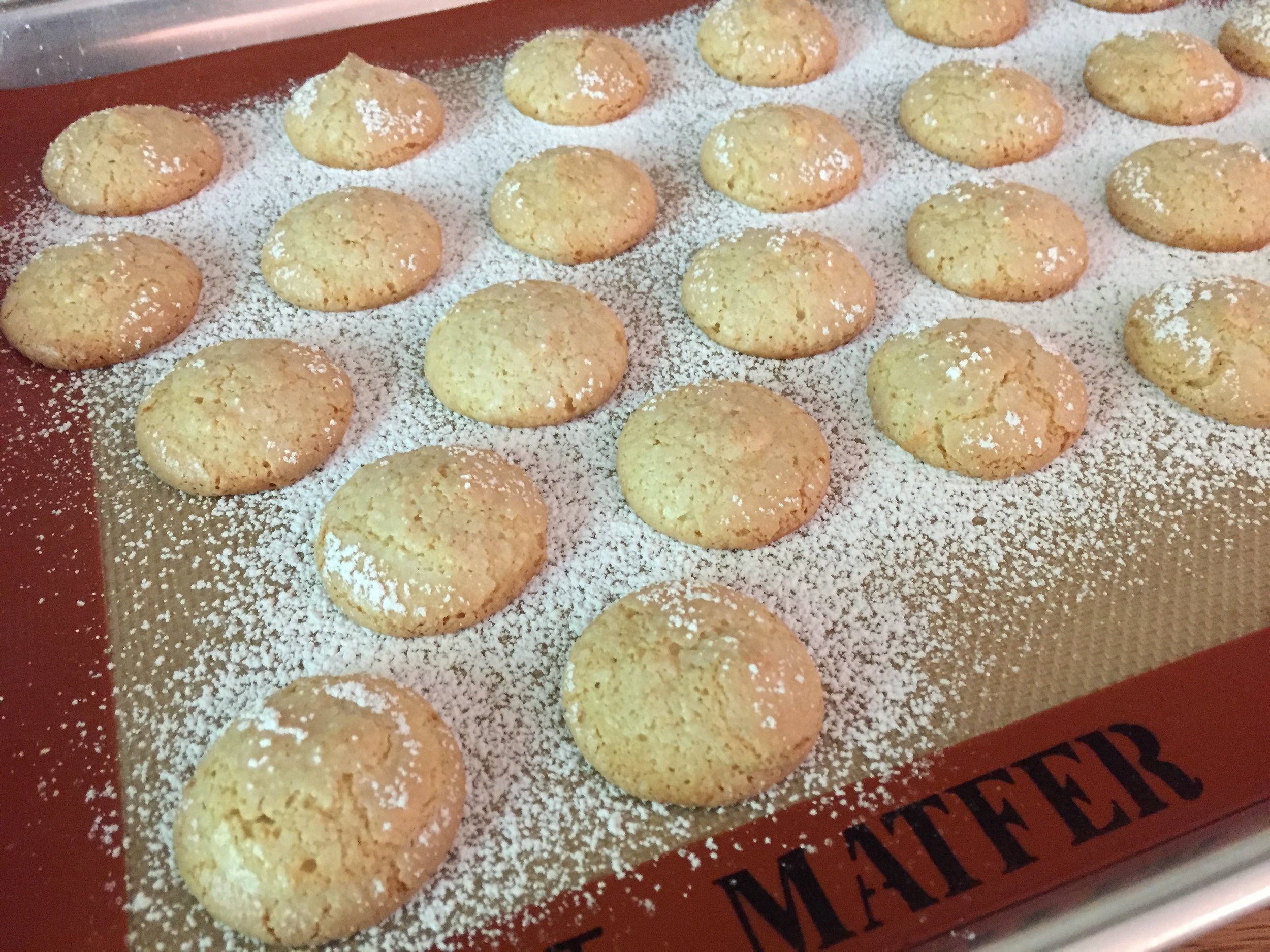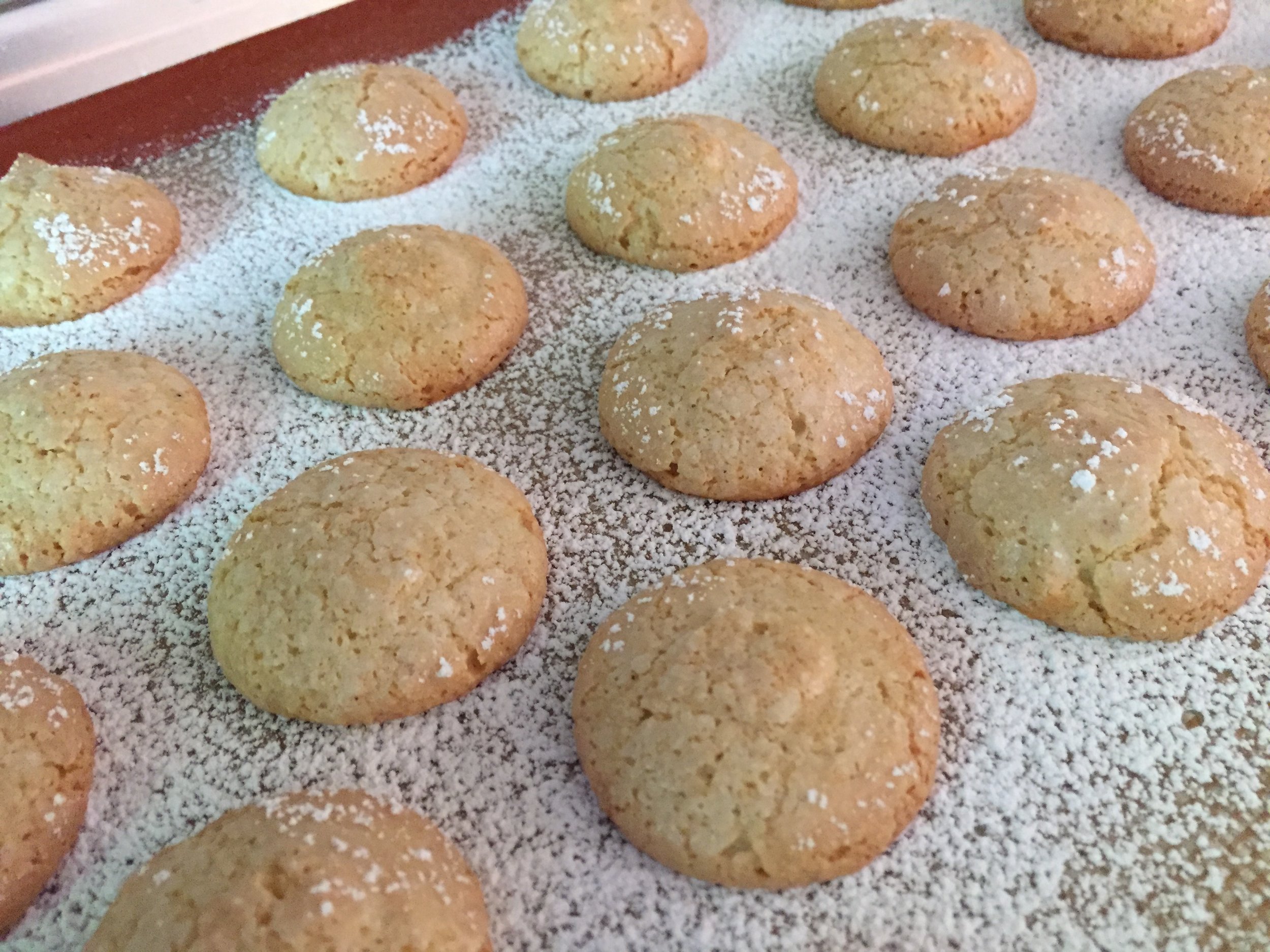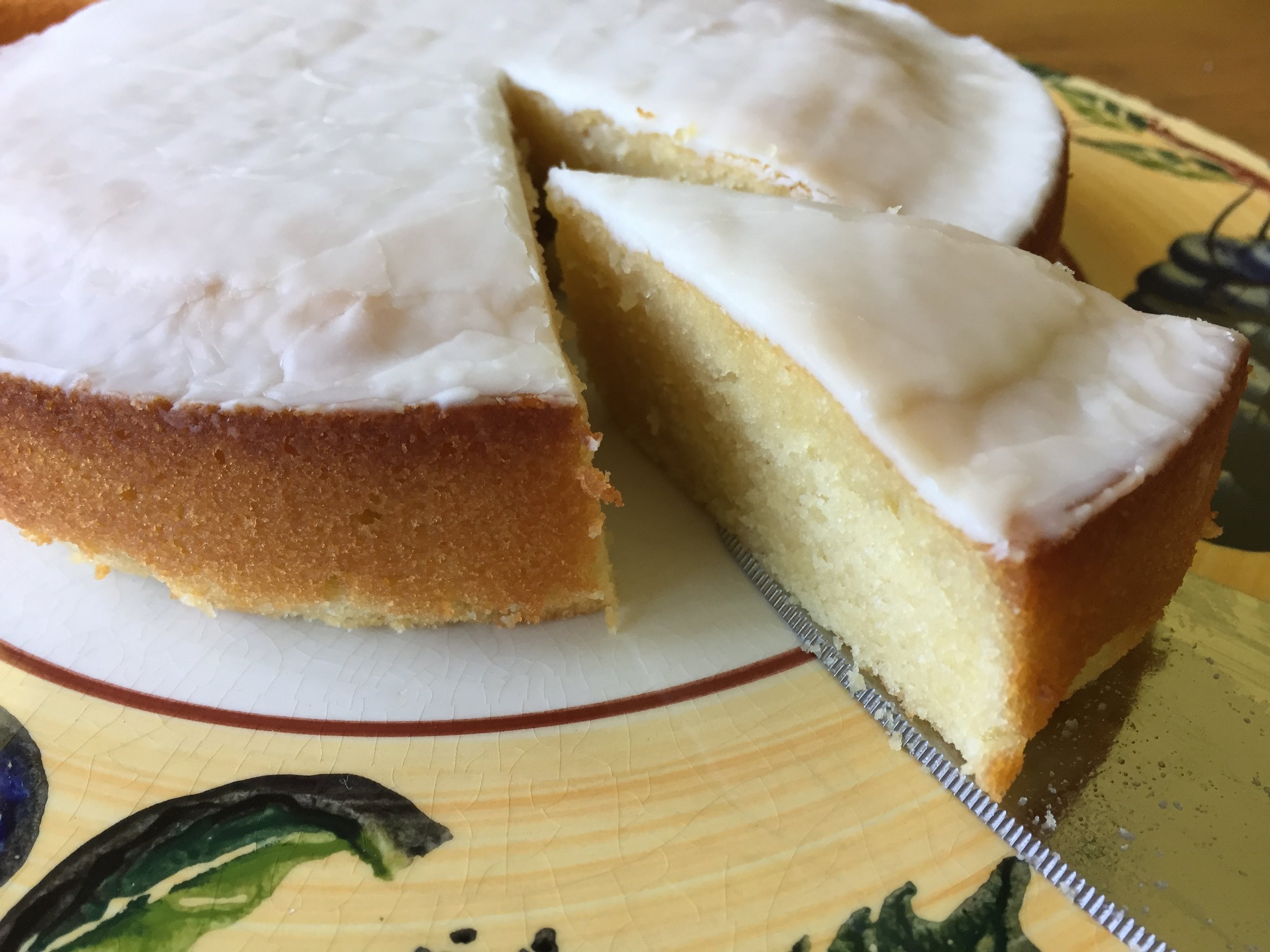Saint Angel tart
/Along the lines of the tarte au fromage blanc that I made during the summer of 2018 as part of my baking with cheese series, this Claudia Fleming inspired tart is reminiscent of a soufflé, using a pastry cream base to which is added triple crème cheese and a lightly whipped meringue. Yum!
In preparation for this project I returned to our favorite cheese shop, The Cheese Lady, here in Grand Rapids. Steve and I never turn down an opportunity to drop by to chat, taste and buy (and they sell some great wines to boot). Love it!
After tasting a few triple crème options I went for Saint Angel, a creamy cow’s milk cheese from the D’Affinois group. It has a lovely, slightly nutty taste with just a hint of salt - perfect for a tart just like this one.
I used my favorite pâte sucrée d’amandes with the addition of ~ 60 g of toasted and coarsely chopped hazelnuts (following Claudia’s lead) for the crust. Below is the lined tart ring before blind baking.
By the way, the base dough recipe makes enough for two 9-inch tarts so I simply wrapped and froze the portion I didn’t use. Nothing wrong with that!
The tart shell can be blind baked at 325ºF and set aside for several hours before filling or even frozen a few days ahead to give your project a jump start before the day you wish to serve it.
With your blind baked shell at the ready, heat your oven to 350ºF.
For the filling I prepared a HALF recipe of my basic crème pâtissière using 3 large eggs, divided - yolks for the crème and whites placed into the bowl of a stand mixer and set aside. Once the crème has cooked and thickened, blend in 283 g/10 ounces Saint Angel cheese (rind removed and cut into pieces), then strain into a large bowl and set aside.
Using the whisk attachment, whip the 3 egg whites on medium-low speed until foamy then slowly shower in 150 g/3/4 cup granulated cane sugar. Once all of the sugar is added, whip on high speed until medium stiff peaks form.
Gently fold a third of the beaten whites into the triple crème mixture, then fold that mixture back into the remaining meringue in two additions.
Transfer the filling into the baked tart shell . . . .
and bake for 20-25 minutes until puffed and golden.
You can certainly plan to serve this soon after baking, yet knowing full well that it would collapse, I opted for letting it do just that, cool down and then give it a try.
Delicious, light, creamy, a hint of salt and a sublime taste treat indeed.
Thinking about accompaniments to a good triple crème cheese, I tried a dollop of cherry jam on top - not bad although Steve wasn’t a big fan. Otherwise toasted nuts, a drizzle of honey, roasted fruits/fruit compotes, berry sauces or coulis would be deelish too! Give it your own spin.
Good news! The tart held up well in the fridge (covered) for the next couple of days. Hurray!
Here’s to everyones health, safety and getting through the uncertainties in today’s world. Take care all of you.

